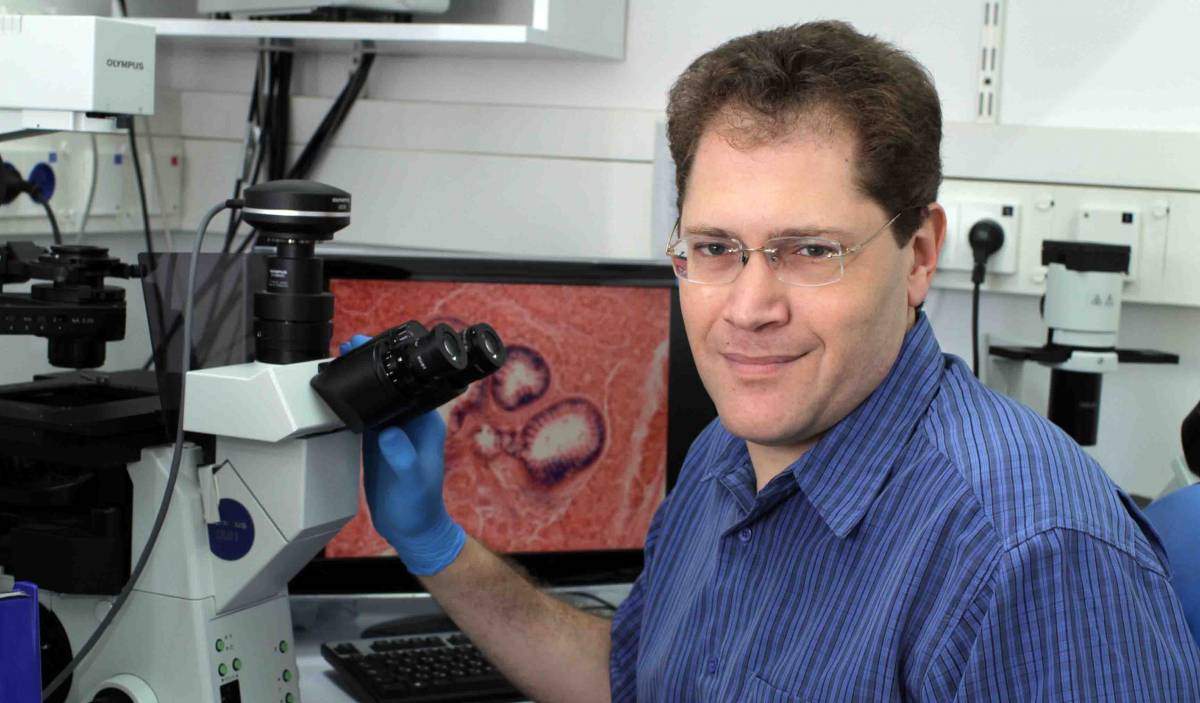Are you a journalist? Please sign up here for our press releases
Subscribe to our monthly newsletter:

One of the things that happens to our bodies as we age is that certain cells start to accumulate. So-called senescent cells – cells that “retire” and stop dividing but refuse to undergo cellular death – are always present, and they even serve some important functions, in wound repair, for example. But in aging organs, these cells don’t get cleared away as they should, and they can clutter up the place. Dr. Valery Krizhanovsky of the Weizmann Institute of Science’s Molecular Cell Biology Department is revealing just how these cells are tied to disorders of aging and why they refuse to go away. His work is not only opening new windows onto the aging process, but is pointing to new directions in treatments for many of these disorders and diseases.
Research into cellular senescence has taken off in recent years, due to findings that clearing these cells from various parts of the body can reverse certain aspects of aging and disease processes. Pharmaceutical industries have taken note, as well, of research that could lead to the development of drugs that might target senescent cells in specific organs or tissues.
In basic research conducted on human cell culture and on mice, Krizhanovsky and his team asked exactly what ties senescent cells to aging. Are they, for example, a primary cause of age-related disease, or a side effect? And why don’t these cells die, despite being damaged, so that the “clean-up crews” of the immune system have to clear them away?
In aging organs, these cells don’t get cleared away as they should, and they can clutter up the place
The researchers hypothesized that the answer to the second question might lie in a family of cellular proteins that regulate a type of cell suicide known as apoptosis. They identified two proteins in this family that prevent apoptosis and which were overproduced in the senescent cells. When they injected mice that had an extra supply of senescent cells with molecules that inhibit these two proteins, the cells underwent apoptosis and were then eliminated, and there were signs of improvement in the tissue.
“In small amounts, these cells can prevent tumors from growing, help wounds clot and start the healing process,” says Krizhanovsky. “But as they amass, they trigger inflammation and even cancer.”
Certain common age-related diseases have been shown to be associated with this build-up of senescent cells, for example, chronic obstructive pulmonary disease (COPD), and Krizhanovsky is hoping to apply these findings to research into treatments for such diseases. The trick, he says, will be to target the offensive cells without causing undue side effects. He has been developing mouse models of COPD and asking whether clearing senescent cells just from the lungs can prevent or ease the disease. Yeda Research and Development, Co., Ltd., is working with Krizhanovsky to patent and license his discoveries.
Dr. Valery Krizhanovsky's research is supported by the Rising Tide Foundation; Mr. and Mrs. Bruce Kanter, Thousand Oaks, CA; and the European Research Council. Dr. Krizhanovsky is the incumbent of the Carl and Frances Korn Career Development Chair in the Life Sciences.